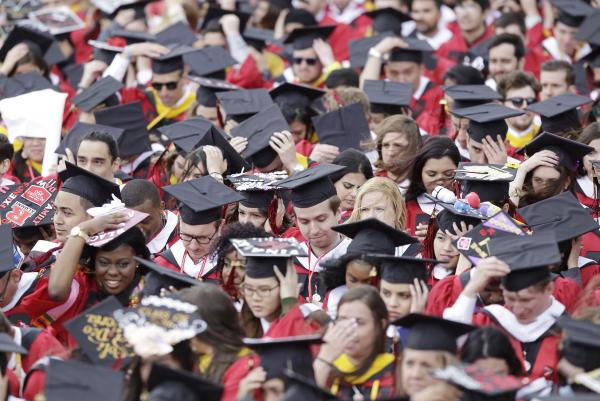
WASHINGTON, Dec. 14 (UPI) — Christians are by far the largest religious group in the United States, but a review of data suggests they are the least educated religious group in the country and that there are large gaps in education level between other religious groups.
The Pew Research Center found in a review of census and survey data that minority religious groups are far more likely than Christians in the United States to have post-secondary or vocational education, with Jews twice as likely to have additional education than Christians and Hindus three times as likely.
When comparing religious groups around the world, the review found Jews tend to have significantly more education than other groups, with Christians spending the second highest average number of years in an educational setting. Buddhists, Muslims and the religiously unaffiliated were also more likely than Christians to have post-secondary education.
Although economic development and history play significant roles in education level, researchers point to immigration as a major influencer in the United States and many European countries because of the demand for people who have skills, rather than those who need them.
In the United States, 87 percent of Hindus and 64 percent of Muslims were born overseas — and coming to the U.S. to build a new life is often easier with education and some sort of financial backing, which often goes hand-in-hand with post-secondary education.
“There are other countries where Christians are more likely to have a postsecondary degree, but the United States stacks up quite well in that regard,” Conrad Hackett, lead researcher in the study, told The New York Times. “It’s just that these minority populations are really quite exceptional.”
Researchers at Pew studied data collected in 2010 from national census data and other surveys from 151 countries, finding education gaps between religions, and even within religious groups in each nation and between the genders in each religion.
Globally, Jews spend an average of 13.4 years in some type of formal schooling, while Christians spend 9.3 years, in school, the religiously unaffiliated spend 8.8 years in school, Buddhists spend 7.9 years in school, and Muslims and Hindus spend about 5.6 years in school.

For other nations not as developed as the U.S. or Europe, the number of people in religious groups with higher levels of education is often pinned to their nation’s history. Muslims in the Middle East have far less schooling than those in Europe.
“This is because education levels are affected by many factors other than religion, including socioeconomic conditions, government resources and migration policies, the presence or absence of armed conflict and the prevalence of child labor and marriage,” researchers wrote in the study.
The researchers found groups with the lowest educational levels aside from Christians have made the greatest gains, with people who are not affiliated with any religion making the biggest increase — religiously unaffiliated adults have 8.8 years of schooling, compared to 7.5 for those affiliated with a religion.

Rather than focus on the type of education people receive — there is no distinction between college or vocational school because attending either results in being educated — the researchers focused on time spent in school.
Overall, educational is increasing and the gaps between groups are shrinking, but roughly one out of five people globally receive any education at all.
“Despite recent gains by young adults, formal schooling is neither universal nor equal around the world,” the researchers wrote. “The global norm is barely more than a primary education – an average of about eight years of formal schooling for men and seven years for women.”





